
Dogs
Friendly, loving and very playful, the Labrador retriever has become one of the most popular breeds in the United States. Historically, this large "sporting" breed has been used to hunt and retrieve birds and only recently has the dog become known as a companion dog. The retriever is highly regarded for its good nature, easy trainability and intelligence.
The Labrador retriever the #1 top breeds based on the American Kennel Club (AKC) tallies.
The Labrador retriever hails from Newfoundland and not Labrador, as the name suggests, though both areas are located in eastern Canada. It is possible that geographic confusion led to the name. Exactly how the breed came to inhabit Newfoundland is not known. The first written report of the breed, a letter written by a traveler to this area, dates to 1822. Fishermen brought the breed to Britain in the early 19th century. Originally, the dogs ranged from a heavy-coated variety known as the Large Newfoundland to a smaller rough-coated variety called the Lesser Newfoundland or St. John's Dogs. The modern-day Labrador retriever probably descends from this St. John's Dog and the currently known Newfoundland breed from the Large Newfoundland.
The breed was not originally used as a companion dog. Instead, retrievers were bred exclusively as hunters, a job for which they possessed superior talents. The Labrador retriever was officially accepted into the English Kennel Club in 1903 and the American Kennel Club in 1917.
Over the years, Labrador retrievers have become useful as guide dogs for the blind, deaf and other handicapped individuals because of their intelligence, trainability, well-rounded temperament, as well as their ability to get along well with people. They are trained as therapy dogs to comfort residents in nursing homes and emotionally disturbed children. The military and police force employ the breed for scent-discrimination to track criminals, drugs, weapons, bombs, and to find people buried in debris of earthquakes or other disasters.
The Labrador retriever is a strong, medium-sized dog possessing a sound, athletic, well-balanced conformation that enables him to function as a retrieving gun dog and as a member of the family. The coat is short, dense and weather-resistant and is black, yellow or chocolate. The breed has an "otter" tail that is thick at the base and gradually tapers.
The adult Labrador stands 21 to 24 inches at the shoulder and weighs 55 to 80 pounds.
The breed is known for its kindly, outgoing and tractable nature. The Lab is eager to please and usually non-aggressive toward man or animal.
The Labrador retriever is good-natured and gentle enough to live with children, though some breed lines have been found to be somewhat hyperactive. The breed will share the home with another dog if introduced and socialized at an early age but has a tendency toward jealousy. They are not the best watchdogs as they are not overly suspicious and might be won over by a friendly gesture of a stranger.
Labrador retrievers are intelligent and love to learn. Most Labradors can begin command training at 6 to 8 months of age. At this age they can have twice daily, 10-minute lessons. If the dog wanders physically or mentally, he is still too young to begin training. Should the dog misbehave, the reprimand must be consistent and appropriate.
Labrador retrievers are powerful swimmers, a skill aided by the webbing between their toes and their water-resistant coats. They are also avid hunters.
By heritage, the Labrador retriever is a worker and requires regular exercise. They should have three walks per day and not be allowed to remain inactive and grow overweight. On the average, an overweight dog will die at an earlier age than a trim, active dog. The dog can become depressed and destructive in the home if adequate exercise is not allowed and encouraged.
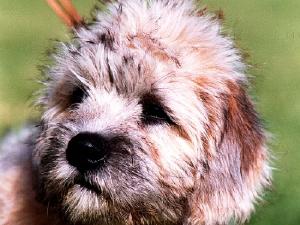 Dandie Dinmont Terrier
Dandie Dinmont
Dandie Dinmont Terrier
Dandie Dinmont
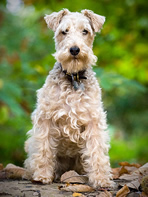 Lakeland Terriers: A guide to dogs and puppies of the Lakeland Terrier breed
The Lakeland Terrier!
The Lakeland Terrier is one dog that,
Lakeland Terriers: A guide to dogs and puppies of the Lakeland Terrier breed
The Lakeland Terrier!
The Lakeland Terrier is one dog that,
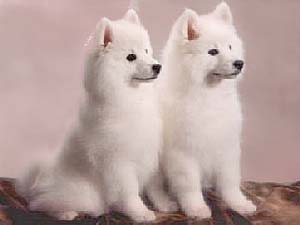 American Eskimo - Miniature
American Eskim
American Eskimo - Miniature
American Eskim
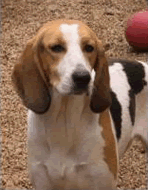 American Foxhounds: A guide to dogs and puppies of the American Foxhound breed
The American Foxhound!
The American foxhound is a large hou
American Foxhounds: A guide to dogs and puppies of the American Foxhound breed
The American Foxhound!
The American foxhound is a large hou
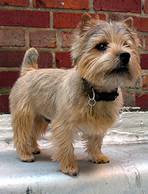 Norwich Terriers: A guide to dogs and puppies of the Norwich Terrier breed
The Norwich Terrier!
The Norwich Terrier is one of the smal
Norwich Terriers: A guide to dogs and puppies of the Norwich Terrier breed
The Norwich Terrier!
The Norwich Terrier is one of the smal
Copyright © 2005-2016 Pet Information All Rights Reserved
Contact us: www162date@outlook.com